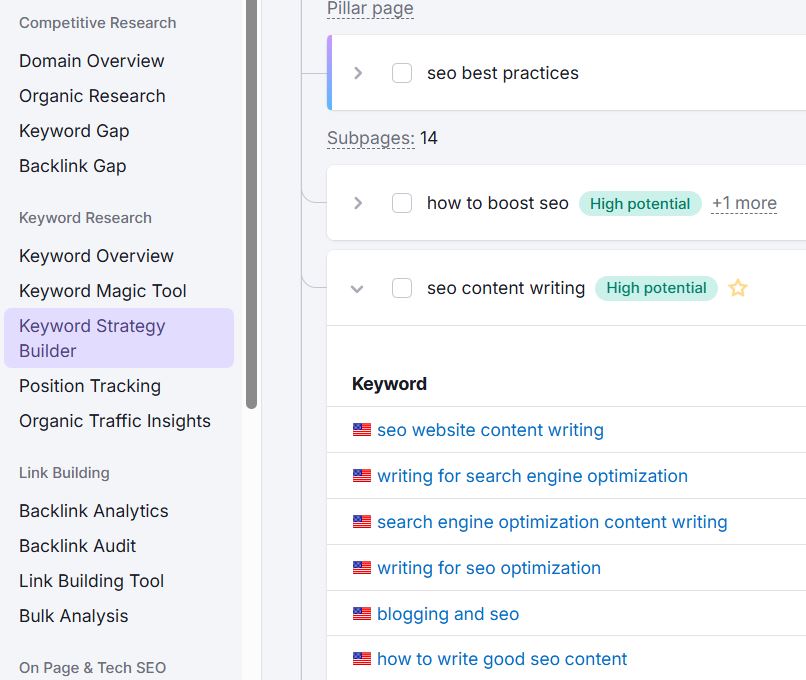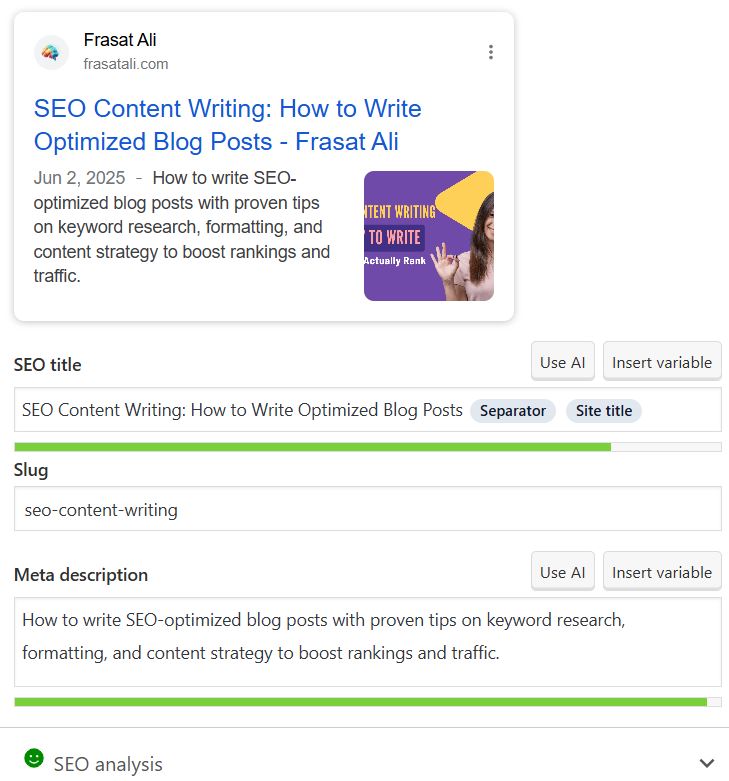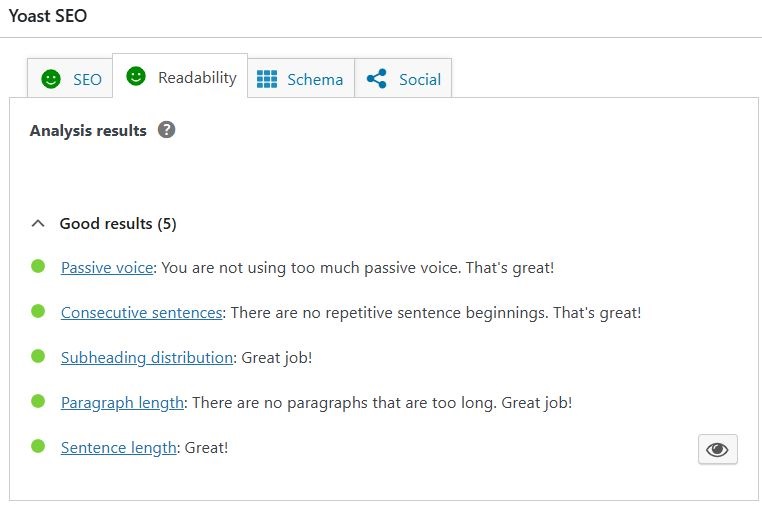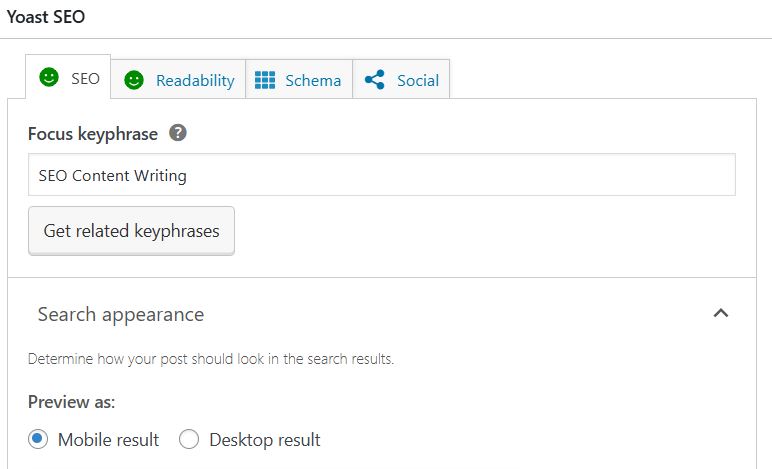As someone who’s been in the SEO trenches for over a decade, I’ve tested countless strategies, written thousands of words, and optimized content across nearly every industry you can think of. I’m Frasat Ali, and what you’re about to read isn’t just another generic guide—this is based on my real-world experience. I’ve refined these SEO content writing methods through hands-on experiments and client work, ensuring everything here is practical, effective, and aligned with what actually gets results in 2025. If you’re looking for actionable tips from someone who lives and breathes SEO, you’re in the right place.
What Is SEO Content Writing?
SEO content writing is the art and science of creating content that resonates with your audience while ranking well on search engines like Google. It involves strategically incorporating relevant keywords, optimizing readability, and ensuring your content matches user search intent. This process is essential for driving organic traffic and improving your website’s visibility.
Why SEO Content Writing Matters
Without SEO-optimized content, even the best information may go unnoticed. Well-crafted SEO content helps to increase your chances of ranking higher in search engine results, attract targeted visitors, and convert visitors into loyal customers. It’s not just about keywords — it’s about creating valuable, relevant, and engaging content that fulfills search intent.
How to Write Good SEO Content
Understand Your Audience and User Intent
Before writing, understand what your target audience is searching for. Consider whether they are looking for answers, product information, or tutorials, and align your content to meet those needs effectively.
Conduct Thorough Keyword Research

Use tools like Google Keyword Planner, SEMrush, or Ubersuggest to find relevant keywords. Examples include seo website content writing, how to write seo optimized content, and how to use seo for blog.
Create a Clear Content Structure
Organize your content using headings and subheadings (H1, H2, H3) for better readability and SEO. Outlining your main points before writing can make this process smoother.
Write Unique, Valuable Content
Avoid duplicate or generic content by offering fresh perspectives, detailed insights, and actionable tips. Google rewards originality and value.
Incorporate Keywords Naturally

Place keywords strategically in titles, headings, meta descriptions, and URLs, but avoid keyword stuffing. The content should sound natural and engaging.
Optimize for Readability

Make your content easy to read by using short paragraphs and adding bullet points or numbered lists where appropriate. Visuals like images or infographics can also support your message.
SEO Best Practices for Blog Writing
Craft Compelling Headlines
Use headlines that are catchy, informative, and include your primary keywords. For example, instead of “SEO Tips,” write “10 Proven SEO Tips to Skyrocket Your Blog Traffic.”
Use Internal and External Links
Link to related articles on your site as well as credible external sources. This helps build authority and enhances the user experience.
Write for Humans First
Ensure your content sounds natural and conversational, avoiding jargon and keyword stuffing.
Optimize Meta Tags
Your meta title and description should include target keywords and accurately describe your content to encourage clicks.
Add Calls to Action (CTA)
Encourage readers to take the next steps, such as subscribing to a newsletter, reading another post, or exploring a product.
How to Use SEO for Your Blog
Use SEO Plugins

Plugins like Yoast SEO and Rank Math can simplify on-page SEO by helping you optimize titles, meta descriptions, and readability.
Improve Site Speed and Mobile Usability
Optimize images, enable caching, and ensure your blog is mobile-friendly to improve user experience and SEO rankings.
Update Content Regularly
Refreshing old posts with new information and keywords keeps your content relevant to both search engines and readers.
Utilize Schema Markup
Adding structured data helps search engines understand your content better and can enhance your search listings with rich snippets.
Blogging and SEO Tips for Success
Writing regularly and targeting long-tail keywords can make ranking easier. Repurposing your content into videos or social posts broadens your reach. Encouraging comments and engagement help build community, and using analytics tools allows you to refine your strategy.
Common SEO Content Writing Mistakes to Avoid
-
Ignoring user intent
-
Keyword stuffing
-
Writing weak headlines
-
Neglecting image optimization (missing alt text or large file sizes)
-
Poor content structure
Frequently Asked Questions (FAQs)
How can I improve my blog’s SEO content writing?
Focus on keyword research, create valuable and unique content, optimize headings and meta tags, and ensure readability.
What tools help with writing for SEO optimization?
Google Keyword Planner, SEMrush, Yoast SEO, and Ubersuggest are excellent tools for keyword research and on-page optimization.
Is AI useful for SEO content writing?
Yes, AI tools like ChatGPT can help generate ideas or drafts, but always edit to ensure natural flow and compliance with E-E-A-T principles.
How often should I update my SEO content?
Review and update content every 3–6 months to keep it fresh and relevant.
Final Thoughts
SEO content writing balances technical SEO strategies with creating engaging, valuable content. By understanding your audience, conducting thorough keyword research, and optimizing your writing for both humans and search engines, you can improve your website’s rankings and drive sustained organic traffic. Keep learning, adapting, and applying best practices for ongoing SEO success.
Frasat Ali is a seasoned SEO Manager with over a decade of experience helping websites improve visibility through ethical, data-backed strategies. He shares actionable SEO insights grounded in real-world success. Read More
![]()
